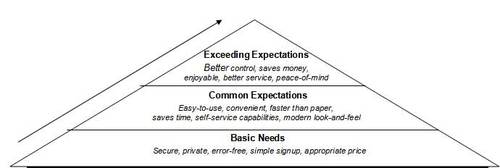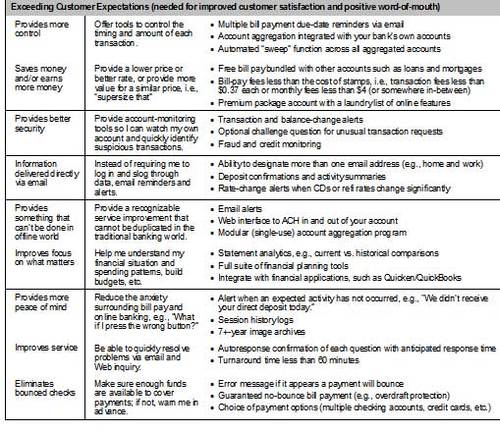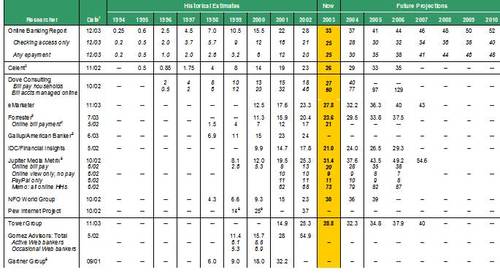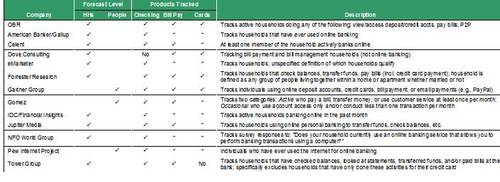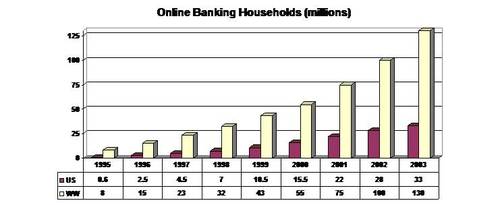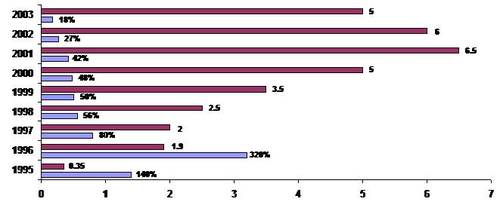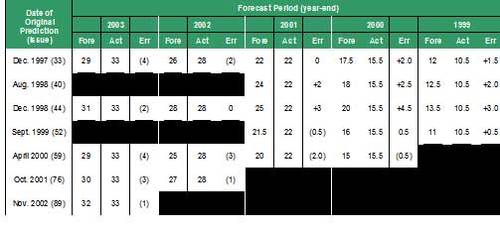Innovating in online marketing and delivery
Credit cards have
always fascinated me. From my first card in 1982, through my stint as a card
product manager in the late 80s, I’ve been a student of the industry,
watching and learning from the best: American Express, Citibank, First USA,
Capital One, and others.
As we entered the Internet era in the mid-to-late 90s, I fully expected
the credit card issuers to lead the financial services sector online. For a
while, it looked like a good prediction. Many of the early online banking
pioneers, NextCard, Providian/GetSmart, Wingspan Bank,
C2it, Juniper Financial, had their roots, and business plans,
centered on credit cards.
But a funny thing happened as that story was being written. Recession.
Whether it was an unseasoned portfolio (NextCard), problems at the parent
(Wingspan), or an over reliance on sub-prime (Providian), these pioneers
lost their funding and retrenched (Providian, Juniper) or disappeared (NextCard,
Wingspan, C2it).
But as card companies recover from the beating they’ve taken during the
past three years, we are seeing renewed innovation from the sector. For
example, after a decade of struggling to get traction, the card companies
have put online bill payment on the map with their convenient card-payment
options. As a result, card issuers have some of the largest registered user
bases in the financial services arena (Table 1 below):
Table 1
Top 5 Online Cardholder Bases, Year-end 2003
number of online cardholders
|
Issuer |
Online Users |
Cardholders (WW) |
% Online |
| American Express |
12 mil (e) |
60 million |
17% to 21% |
| Citibank |
10 mil (e) |
140 million |
6% to 10% |
| Discover Card |
9 mil (e) |
50 million |
17% to 20% |
| Capital One |
8 mil (e) |
47 million |
15% to 18% |
| MBNA |
6 mil (e) |
40 million |
13% to 16% |
| |
|
|
|
|
Source: Companies, (e) Online Banking Report estimates, +/- 25%, 2/04
We still believe that long-term you are better off wrapping your direct
banking efforts around plastic rather than paper ( “Will that be Paper or
Plastic?”). If NextCard had been more patient in building its portfolio,
they could have been a powerhouse today. So who will take their place as
The Internet Credit Card? It’s one of the more intriguing opportunities
of the decade.
Table 2
Top 5 Online Cardholder Bases, 2000 to 2003
number of online cardholders
|
Company |
2003 Dec |
2002 Dec |
2001 Dec |
2000 April |
| American Express |
12 mil (e) |
8.9 mil |
5.2 mil |
1.8 mil |
| Citibank |
10 mil (e) |
7.6 mil |
5.5 mil |
1 mil (e) |
| Discover Card |
9 mil (e) |
8.0 mil |
6.0 mil |
ina |
| Capital One |
8 mil (e) |
6.3 mil (d) |
3.5 mil (d) |
ina |
| MBNA |
6 mil (e) |
4.5 mil |
2.7 mil |
ina |
Total
% change |
45 mil
29% |
35 mil
52% |
23 mil
475% |
4 mil
— |
Sources: Companies except, (d) Dove, (e) Online Banking Report
estimates, +/-25%, 2/04
Online Card Usage
According to a recent Forrester report,1
75% of U.S. credit card customers have online access, and of those 36% (20
million) access their card statements online. More than 60% of those users
(12 million) accessed their account regularly. Fisite Research, a company
founded by ex-Gomez payments analyst, Paul Jamieson, found even higher
usage; with 57% of online cardholders saying they manage some aspect of
their card online2 (see Table 3, right). Whether the true
number is 20 million or 30 million or somewhere in between, we do know that
the use of online credit card management has exploded. Three years ago
(year-end 2000), fewer than five million households accessed cards online (see
full details, Table 5, opposite). Now, at least five individual card
issuers have online user bases of five million or more (see Table 2,
above).
There is even a greater disparity in estimates of the number of
cardholders paying their card bill online. Forrester found that just 36% of
online card statement viewers
(7 million HHs) pay their bill online, while Fisite reported 74% of online
card managers paid online.2 Gartner estimated that 22 million
adults pay their card bill online, either directly or through third-party
bill pay.3 Based on these estimates and usage numbers from
individual card issuers, we estimate 16 and 18 million households pay their
card bills online directly at the issuer, up nearly 20-fold since less than
one million users at the beginning of 2003.
1How To Right-Channel Credit Card Customers, by
Catherine Graeber, Forrester Research, Jan. 2004, $675,
http://www.forrester.com/ ,
fielded, Q2, 2003
2The TSYS Summer 2003 Executive Online Credit Card Survey,
Finite Research, $2495,
http://www.fisiteresearch.com/ fielded May/June 2003; the numbers
may be higher because respondents included pay-anyone third-party
payments in their answers
3EBPP Future Blends Direct Bank Aggregation Models,
Jan 13, 2004, by Avivah LItan, Gartner,
http://www.gartner.com/ $95,
fielded May ‘03
Table 3
U.S. Online Credit Card Usage Estimates
|
Metric |
Forrester
HHs |
Fisite
HHs* |
Gartner
Adults |
| Credit card households |
75 mil* |
75 mil* |
— |
| % of cardholders online |
75%
56 mil |
— |
— |
% of online cardholders using online card account
management |
36%
20 mil |
57%
32 mil* |
— |
| % of online card managers using it regularly |
60%
12 mil |
— |
— |
| % of online card HHs paying their card bill online |
36%
7.2 mil |
74%
24 mil* |
—
22 mil** |
Source: Companies, Online Banking Report, 2/04
*OBR estimates, Fisite reported usage as a percent of cardholders responding
to its online survey fielded summer 2003, household extrapolations by OBR
**Includes online payment direct at card issuer or through third-party bill
pay
Table 4
Online Card Evolution
|
Phase |
Period |
Product Positioning |
Primary Market |
| Beta |
1997 to 1999 |
Easy way to apply for a card |
Geeks and scam artists |
| Version 1.0 Novelty |
2000 to 2001 |
Cool to check your card online |
Early adopters |
| Version 2.0 Utilitarian |
2002 to 2003 |
Easier way to pay your card bill |
Early mainstream |
| Version 3.0 Value-add |
2004+ |
Save time and money with total credit
management |
50% of U.S. households |
Source: Online Banking Report,
2/04
Forecast
The convenience and reliability of paying card bills
online will continue to drive online credit card growth. For 2004, we
project overall growth of five million new online credit card households
(range: 4 to 7 million), the same number of newcomers as in 2003. However,
the rate of growth will slow slightly to 25% compared to 33% last year. Ten
years from now, online credit card penetration is projected to grow to 47
million, 40% of U.S. households, compared to 19% today.
Table 5
Online Credit Card Forecast

U.S. households using online credit cards at
year-end*
Source: Online Banking Report projections based on industry data (+/-
30%), 2/04
Table 6a
Consumer Households Using Online Credit Cards: U.S. vs.
Worldwide
millions of households actively using online banking and/or
online bill payment
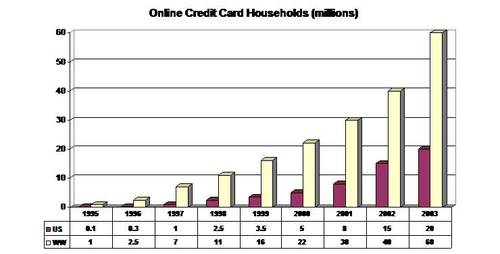
Source: Online Banking Report estimates 2/04, accuracy estimated at plus
or minus 30% U.S., 40% worldwide
Table 6b
Annual Growth Rate of U.S. Credit Card Households
millions of U.S. households and percent change from
previous year

Source: Online Banking Report estimates, 2/04; accuracy estimated at
plus or minus 30%
Table 7
OBR Definition: Online Credit Card Household
-
Someone in the household must have done at least ONE of the
following during the past 6 months:
-
Viewed balance/available credit or transaction data
online1 for a general purpose2 credit or charge card
-
Authorized a card payment at the site of the card issuer
(not at a third party such as a bank’s pay-anyone bill-pay service)
Does not include:
-
Online point-of-sale
transactions using a credit card
-
Debit or prepaid card account management, application,
or purchase
(1) Any connection from home, work, school, or other place where data can be
viewed through any device (Web phone, browser, proprietary software,
Quicken, Money, etc.)
(2) Visa, MasterCard, American Express, Discover
Table 8
Gomez Top Card Companies
Q3 2003 Scorecard
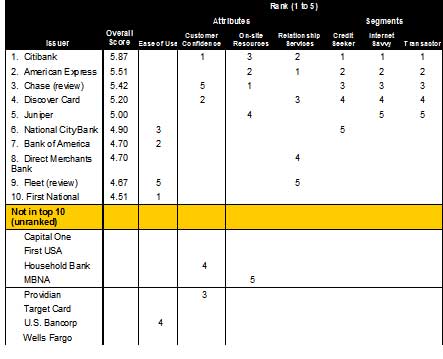
Source: Gomez, 1/04
 Our parent publication, Online Banking Report, has just released its latest in-depth report: Mobile Money & Payments 2.0: Why credit & debit card issuers should embrace mobile delivery now
Our parent publication, Online Banking Report, has just released its latest in-depth report: Mobile Money & Payments 2.0: Why credit & debit card issuers should embrace mobile delivery now



